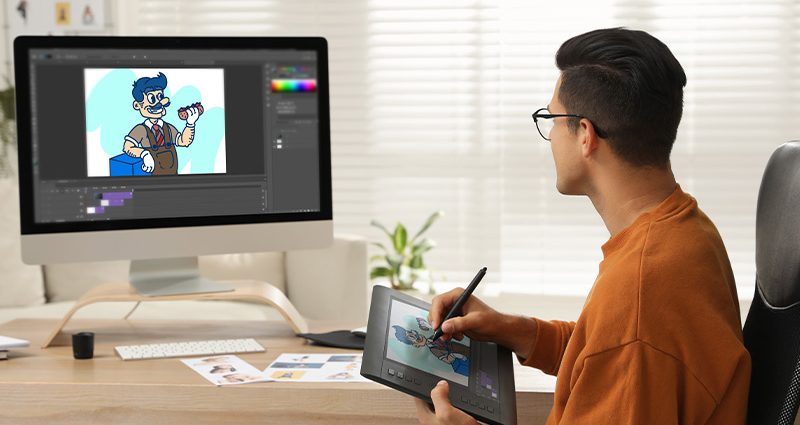Table of Contents
# What is a Graphic Designing Course?
# 6-Step Graphic Design Process
Graphic design plays a pivotal role in today’s visually driven world. Whether it’s creating a logo, designing a website, or developing marketing materials, the power of effective graphic design cannot be underestimated.
However, achieving desired results in graphic design is not just about artistic flair. It requires a systematic approach.
In this blog post, we will discuss the 6-step graphic design process that can help drive successful outcomes in your design projects.
What is a Graphic Designing Course?
Before delving into the graphic design process, let’s first understand what a graphic design course entail. A graphic design course is a structured program that equips individuals with the skills and knowledge to create visually appealing designs using various software tools and techniques.
By enrolling in a graphic institute for a graphic design course, aspiring designers can learn the technical skills and design principles necessary to excel in the field.
6-Step Graphic Design Process

- Understanding the Brief: The first step in the graphic design process is to thoroughly understand the client’s requirements and objectives. This involves meeting with the client and having a detailed discussion about their brand, target audience, and design preferences. Understanding the underlying purpose and desired message of the design project sets the foundation for the subsequent steps.
- Research and Inspiration: Once the project brief is clear, it is crucial to conduct research and gather inspiration. This involves exploring the client’s industry, competitors, and existing design styles. Researching design trends and looking for inspiration from various sources, including books, websites, and design galleries, helps to generate ideas and establish a creative direction for the project.
- Concept Development: Armed with research insights and inspiration, the next step is to develop design concepts. This involves brainstorming ideas and creating multiple design options that align with the client’s objectives. Sketching, creating mood boards, and experimenting with different visual elements can help in refining the initial concepts and choosing the most appropriate direction for the design.
- Design Execution: Once the concept is finalized, it’s time to bring the design to life. This step involves using graphic design software like Adobe Photoshop or Illustrator to create the actual design. Attention to detail, proper use of color, typography, and layout principles, and ensuring visual consistency are all key aspects of this step. It is important to involve the client throughout the design execution process and seek their feedback to ensure the design aligns with their vision.
- Review and Feedback: After completing the initial design, it is essential to seek feedback from the client and other stakeholders. This allows for constructive criticism and suggestions for improvement. Client input is invaluable as it helps to ensure that the design meets their expectations. Iterative refinements based on feedback are carried out to perfect the design and align it with the client’s requirements.
- Finalization and Delivery: Once the design has been refined and approved, it is time to finalize and prepare the design for delivery. This step involves creating the final digital files in the appropriate formats, organizing and labeling files for easy reference, and delivering the design to the client. It is important to maintain open communication with the client during this phase to address any further requests or adjustments.

Are You Searching for A Graphics Institute Near Me?
If you are searching for a “graphics institute near me” then George Animatrix is the place for you. George Animatrix offers a range of learning opportunities—from hands-on projects and courses to job-ready certificates and degree programs. Their courses are renowned and affordable.
Conclusion
In conclusion, a well-defined graphic design process is essential to drive successful results in design projects. It begins with understanding the client’s brief and conducting thorough research and inspiration gathering. Concept development, design execution, and seeking feedback from the client are crucial stages in the process. Refinements and adjustments based on feedback lead to the finalization and delivery of the design. By following this structured process, designers can create visually appealing and impactful designs that effectively convey the client’s message. So, whether you are a professional designer or an aspiring one, adopting this 6-step graphic design process can help you achieve successful outcomes in your design projects.
